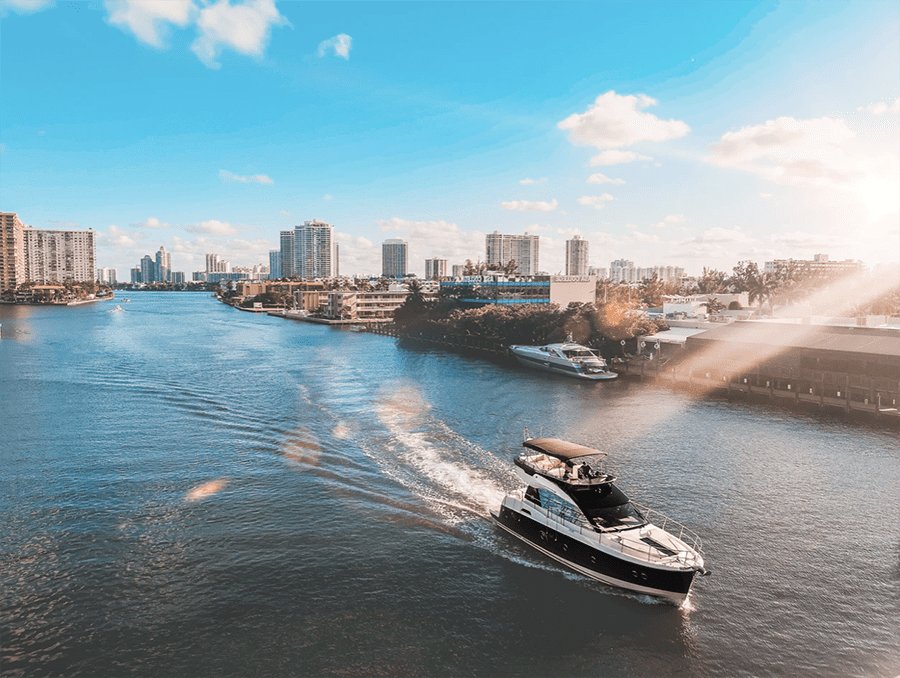Miami Beach, the sun-kissed real estate paradise on Florida’s southeastern coast, has long been synonymous with luxury, excess, and a vibrant scene. Behind its glamorous façade, however, lies a city that has undergone a fascinating series of transformations throughout its history. From its origins as a playground for the wealthy elite to social challenges and subsequent rapid ascent, Miami Beach has consistently demonstrated resilience and adaptability. Today, as the city faces new challenges, it prepares for a fresh reinvention, one that embraces cultural enrichment and redefines its very essence.
Miami Beach: A Journey Through Time
Nearly a century ago, in the roaring ’20s, Miami Beach experienced its first real estate boom. Millionaires like Harvey Firestone, J.C. Penney, and Rockwell LaGorce flocked to this three-mile stretch of paradise known as Millionaire’s Row. It was during this period that Art Deco architecture began to take shape, leaving an indelible mark on the city’s identity. The bubble burst with the onset of the Great Depression, plunging Miami Beach into a severe economic crisis. Nevertheless, the city found a way to bounce back.
Revival and Reinvention
In the ’40s and ’50s, Miami Beach witnessed a revival fueled by an influx of retirees and post-war economic boom. The construction of numerous hotels along Collins Avenue propelled the city’s tourism industry. As the ’50s approached, the so-called “Miami Beach experience” was packaged and marketed to the American middle class, losing some of its authentic charm in the process. Nevertheless, Miami Beach pressed on. The city maintained a busy schedule of events, attracting prominent artists like Sinatra’s Rat Pack and the newly discharged army man, Elvis Presley. However, with the rise of countercultural movements and shifting social attitudes, Miami Beach found itself disconnected from the evolving times. Over time, historic communities established themselves, and by the late ’70s, its decline was marked by crime and deteriorating infrastructure. Yet, as in every cycle of transformation, Miami Beach had its moment of rebirth.
Preservation and Passion
In the ’80s, the groundbreaking TV series Miami Vice entered the scene. Debuting in September 1984, it portrayed an exaggerated and glamorous version of the city, showcasing its vibrant energy and enveloping atmosphere. Miami Vice not only saved South Beach from demolition but also played a significant role in shaping Miami Beach’s image. Activists fought passionately to preserve the decaying Art Deco hotels that emerged in Miami Beach towards the end of the Depression era, providing affordable accommodations to snowbirds. Led by Barbara Capitman, these activists succeeded in getting the Art Deco District and its Tropical Deco building inventory listed on the National Register of Historic Places in 1979. This listing ensured the protection of the city’s unique architectural heritage. Additionally, artists, designers, and entrepreneurs recognized the potential of Miami Beach and flocked to the city during its ’90s renaissance. In particular, the fashion industry fell in love with Miami Beach’s dynamic atmosphere and vibrant colors, solidifying its status as a global hotspot for nightlife. During this era, Miami Beach became a magnet for celebrities seeking a subtropical vacation spot away from the spotlight. Icons like Madonna and Gianni Versace were drawn to the allure of this sensual paradise, embracing its vibrant lifestyle and contributing to its aura of mystery. The late ’90s and early 2000s marked the peak of Miami Beach’s transformation. Its reputation as a playground for the rich and famous was solidified, becoming a global hotspot for nightlife. Celebrities and jet-setters from around the world flocked to Miami Beach, attracted by the lively entertainment scene, luxury hotels, and world-renowned restaurants.
Glamour and Sophistication
Over the years, Miami Beach faced the challenge of maintaining a delicate balance. The city had to reconcile its image as a glamorous entertainment hub with the desire to cultivate a more refined and inclusive atmosphere. High rents and the departure of distinctive merchants led to vacant storefronts, especially in coveted areas like Lincoln Road. This departure of small businesses disrupted the city’s unique charm, diminishing its appeal for European and South American visitors who once sought longer vacations with more disposable income.
Cultural Renaissance
Today, Miami Beach stands at a crucial moment, ready to redefine its identity once again. The city aims to shed the reputation of a lawless spring break destination and embrace a cultural renaissance. A recent bond issuance, totaling $97.6 million, is funding improvements to cultural projects like the Miami City Ballet and the Bass Museum of Art. These bonds are secured by property taxes, which have increased in recent years due to Miami Beach’s appeal to the wealthy. The bond issuance represents a significant effort by Miami Beach to transform its image and pivot towards a cultural landscape. The city seeks to attract “cultural tourists” rather than crowds of young vacationers. Miami Beach has seen an increase in residential property values, with nearly a 125% growth in the last decade. The arrival of high-income individuals, including billionaires like Puerto Rican entrepreneur Orlando Bravo, H.I.G. Capital Co-Founder and Co-CEO Sami Mnaymneh, and hedge fund executive Ken Griffin, has led to the development of modern office buildings, new restaurants, and success in hosting international events like Art Basel. Miami Beach has always had a rich cultural base, boasting institutions like the New World Symphony and the Miami Beach Botanical Garden. The recent bond funding will build on this history, promoting the city’s arts and cultural offerings. Investments aim to create an unprecedented growth in museums, theaters, and public performance spaces, further enriching Miami Beach’s vibrant community. As Miami Beach embarks on its latest chapter, the delicate dance between growth and preservation will shape its future, a narrative that carries the potential for enchantment and cautionary tales. The city’s transformative journey serves as a compelling reminder that reinvention is a nuanced dance, requiring a delicate balance between progress and respect for its unique identity.

